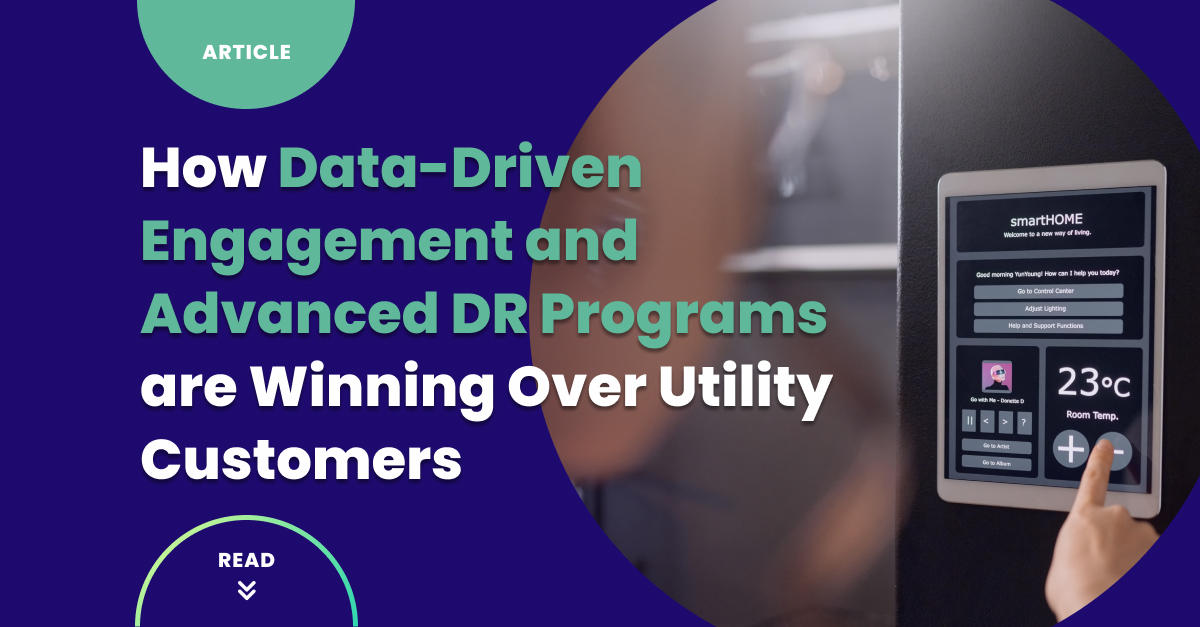Bridging the Gap: How Data-Driven Engagement and Advanced DR Programs are Winning Over Utility Customers

The energy transition requires more than just new sources of power; it demands a fundamental shift in how consumers interact with the grid. While the promise of cleaner, more efficient energy is appealing, a significant hurdle remains: customer wariness toward demand response programs.
Many utilities and energy providers are finding that even as smart home technology becomes mainstream, converting device owners into active, engaged participants is a major challenge. The solution lies in a data-driven, customer-centric approach powered by modern software.
The Challenge: Low Engagement Despite High Potential
A recent report by Parks Associates and Resideo Grid Services highlights the core of the problem: despite a doubling in smart thermostat adoption over the last eight years, only about 20% of these households participate in a DR program. The reasons for this low participation are clear and rooted in customer experience. The primary barriers cited are a lack of awareness, concern about comfort and convenience, and a fear of losing control over their home environment. For utilities, this translates to low program enrollment and high churn rates, with approximately 12% of participants dropping out. Without addressing these core customer concerns, scaling DR programs to meet the demands of a modern grid remains an uphill battle.
The Solution: A Data-Driven Approach to Trust
Successfully bridging this gap requires a strategic shift from simply offering a program to actively building trust and providing a superior customer experience. This is where advanced software platforms and data analytics become indispensable. A modern approach to DR focuses on three key areas:
- Intelligent and Personalized Communication: Generic notifications about upcoming DR events are no longer sufficient. Research shows that proactive, transparent communication—such as additional email notices about events—significantly increases customer commitment. Modern software platforms can use data to personalize these communications, explaining the direct impact on the customer’s energy bill and the broader benefits to the community. This turns a potentially disruptive event into a positive, predictable experience.
- Seamless, “Barely Noticeable” Events: The primary fear of losing comfort can be mitigated through smarter technology. Instead of broad, long-duration events, new approaches favor shorter, more targeted events that are less disruptive to daily life. The Resideo report notes a 173% increase in the number of DR events from 2021 to 2024, yet the average enrolled device participated in only 2% more events. This is enabled by sophisticated software platforms that can precisely target specific sections of the grid and manage a diverse portfolio of devices—from smart thermostats to electric vehicle chargers—to meet a specific load-shedding goal without inconveniencing the customer.
- Incentivizing and Sustaining Engagement: Financial incentives are a powerful motivator for participation, with 60% of consumers signing up for DR programs because of them. However, a truly effective program goes beyond a one-time reward. Smart platforms can integrate behavioral science, providing real-time feedback and gamification features that show customers their impact on energy savings and grid stability. This builds a deeper sense of commitment and community, transforming a transactional relationship into an ongoing partnership.
The Broader Context: Software’s Role in a Modern Grid
As the energy sector moves toward decarbonization, demand response and distributed energy resources are no longer just supplementary tools; they are essential components of a reliable grid. The NYISO Power Trends report highlights the critical role of demand-side management in mitigating environmental impacts, lowering costs, and ensuring a stable power supply, especially with the increasing integration of intermittent renewables. This highlights the need for utilities to invest in the software that enables this level of sophistication. From optimizing load balancing to forecasting demand with greater accuracy, software provides the intelligence layer necessary to manage the complex, dynamic grid of the future.
By prioritizing a data-driven, customer-centric approach, utilities can not only meet their reliability goals but also build a powerful, engaged community of customers who are active partners in the energy transition. This bridge—built on smart technology and a deep understanding of the consumer—is the key to unlocking the full potential of demand response.